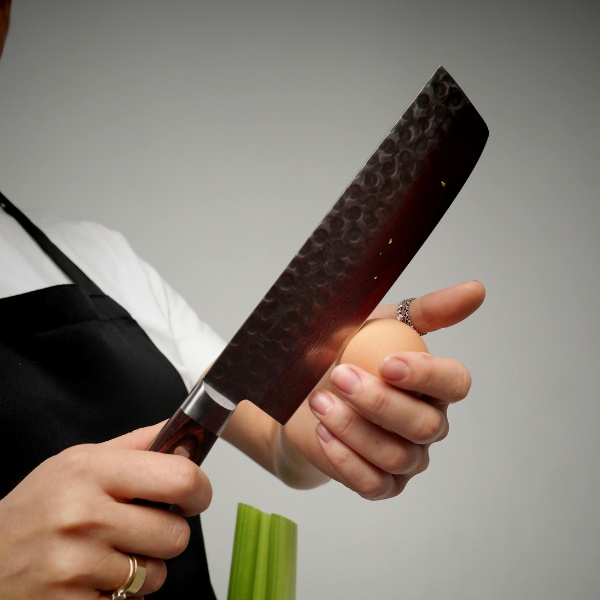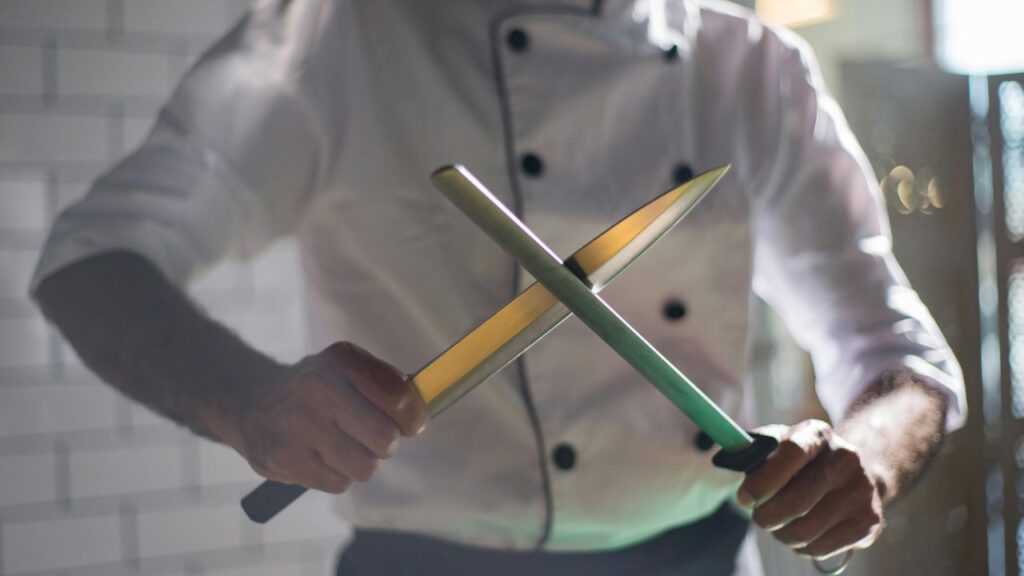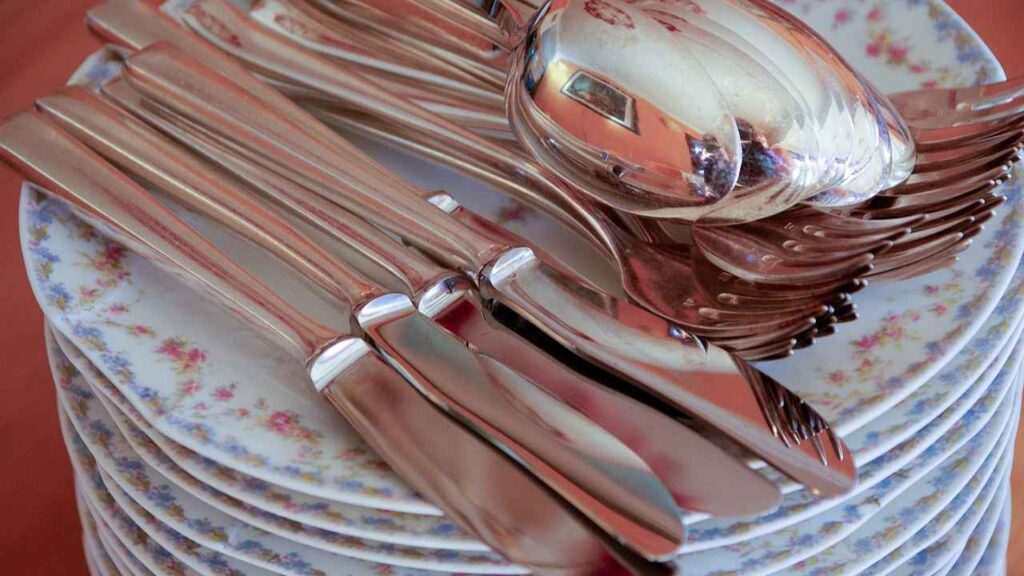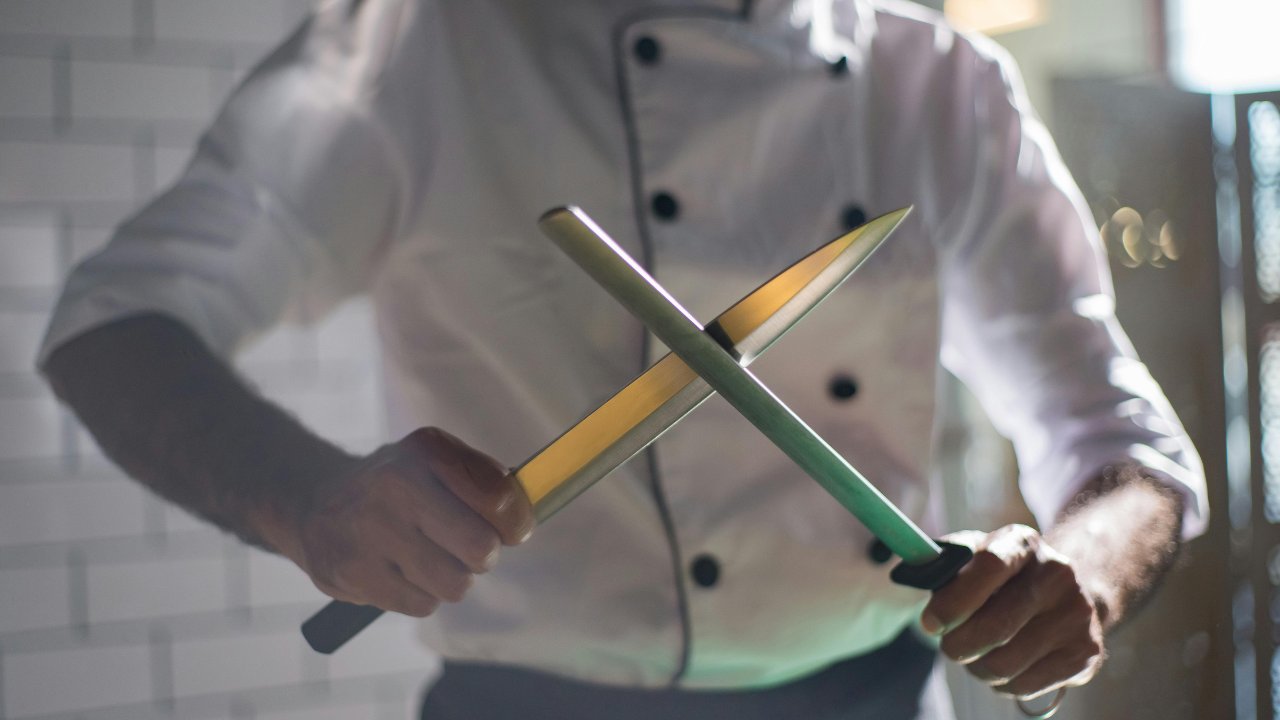Keeping kitchen knives sharp is essential for efficient and safe cooking. But the process of sharpening can be tricky, especially when it comes to choosing the right angle. What is the best angle to sharpen a kitchen knife, and why does it matter? The angle determines how sharp the knife becomes and how long it retains its edge.
However, many people make mistakes when deciding on the sharpening angle, leading to dull blades or even damaging the knife. In this guide, we’ll explore the common mistakes people make and provide tips to ensure your knives stay sharp and functional for everyday use.
Mistakes to Avoid When Deciding What Is the Best Angle to Sharpen a Kitchen Knife

Mistake 1: Choosing the Wrong Sharpening Angle
One of the most common mistakes is selecting an incorrect sharpening angle. The best sharpening angle for kitchen knives typically ranges between 15 and 20 degrees per side, depending on the type of knife. For example:
- Japanese knives: These often require a sharper angle (around 15 degrees) for precision cutting.
- Western knives: A 20-degree angle is more common, offering durability for heavier tasks.
Why It’s Important:
The wrong angle can compromise the knife’s performance. A too-sharp angle might make the edge fragile, while a wider angle could reduce cutting efficiency.
Mistake 2: Ignoring the Knife Type
Different knives are designed for specific purposes, and their ideal sharpening angle varies. Ignoring the knife type often leads to improper sharpening.
Example:
- A chef’s knife used for chopping vegetables may need a 20-degree angle.
- A filleting knife for delicate tasks might require a sharper angle, around 15 degrees.
How to Avoid:
Understand the optimal angle for sharpening kitchen knives based on the knife’s design and intended use.
Mistake 3: Not Maintaining a Consistent Angle
Even if you know the correct angle for sharpening a kitchen knife, failing to maintain it during sharpening can result in uneven edges. This inconsistency affects the knife’s sharpness and durability.
How to Avoid:
Use a sharpening guide or angle guide tool to ensure consistency. Alternatively, practice holding the blade steady if sharpening by hand.

Mistake 4: Over-Sharpening the Knife
Sharpening a knife too frequently or for too long can wear down the blade unnecessarily, reducing its lifespan.
Signs of Over-Sharpening:
- The blade becomes thinner than necessary.
- The edge loses its structural integrity, becoming brittle.
Solution:
Sharpen your knives only when needed. For most home cooks, sharpening every few months (or as soon as the knife feels dull) is sufficient.
Mistake 5: Using the Wrong Sharpening Tools
The type of sharpening tool you use can significantly impact the results. Some tools might not support the required angle or could damage the blade if not used correctly.
Common Tools and Their Best Uses:
- Whetstone: Allows precise control of the sharpening angle.
- Sharpening rods: Suitable for maintaining edges but may not correct dull blades.
- Electric sharpeners: Convenient but may not cater to specific angles like those needed for Japanese knives.
Mistake 6: Skipping the Honing Process
Many people confuse honing with sharpening, or they skip it altogether. Honing realigns the blade’s edge, maintaining its sharpness between sharpening sessions.
Why Honing Matters:
Regular honing reduces the need for frequent sharpening, prolonging the knife’s life and keeping it effective for daily tasks.
How to Hone Properly:
Use a honing rod at the correct angle for sharpening a kitchen knife, and gently glide the blade along the rod to realign the edge.
Mistake 7: Neglecting to Test the Blade After Sharpening
After sharpening, many people forget to test the knife’s sharpness, which can lead to surprises during cooking.
Simple Tests:
- Paper Test: A sharp knife should cut through paper effortlessly.
- Tomato Test: A well-sharpened knife should slice through a tomato without crushing it.
Testing helps you confirm that the knife has been sharpened correctly and is ready for use.
Sharpening Angles for Kitchen Knives Explained
Here is a quick overview of common sharpening angles and their uses:
| Angle Range | Ideal For | Benefits |
|---|---|---|
| 15 Degrees | Japanese knives | Extremely sharp, precise cuts |
| 20 Degrees | Western knives | Durable edge for versatile tasks |
| Over 20 Degrees | Heavy-duty knives | Enhanced durability for tough tasks |
Best Practices for Finding the Best Angle

- Check Manufacturer Guidelines: Many knife manufacturers specify the ideal sharpening angle for their products.
- Invest in Adjustable Tools: Some sharpening systems allow you to adjust the angle, ensuring accuracy for different knife types.
- Practice Makes Perfect: With practice, you’ll develop the muscle memory to hold the knife at the correct angle consistently.
Conclusion
When deciding what is the best angle to sharpen a kitchen knife, many people make mistakes that can affect the knife’s performance and lifespan. Common errors like choosing the wrong angle, not considering the knife type, or applying uneven pressure during sharpening can result in dull blades or damage.
It’s essential to understand that most kitchen knives work best at an angle between 15 and 20 degrees, but this varies depending on the knife’s purpose. Avoid rushing the process or guessing the angle—precision is key for a sharp, long-lasting edge.
By taking the time to learn about sharpening angles and using the right tools, you can keep your knives in excellent condition. Proper sharpening not only enhances your cooking experience but also saves time and effort in the kitchen. Remember, a well-sharpened knife is safer and more effective than a dull one.
FAQ’s
What is the best angle to sharpen a kitchen knife?
The best angle typically ranges between 15-20 degrees per side. Japanese knives often require a 15-degree angle, while Western knives are best sharpened at 20 degrees.
What is the difference between sharpening and honing?
Sharpening removes material to create a new edge, while honing realigns the existing edge to maintain sharpness. Both are essential for proper knife care.
Can I use a whetstone for all types of knives?
Yes, whetstones are versatile and suitable for most knives. However, ensure you use the correct angle and technique based on the knife’s design.
How often should I sharpen my kitchen knives?
For home use, sharpening every 3-6 months is usually sufficient. Hone your knives regularly to maintain sharpness between sharpening sessions.
What happens if I sharpen a knife at the wrong angle?
Sharpening at the wrong angle can result in a dull edge, reduced durability, or even blade damage. Always use the recommended angle for best results.

